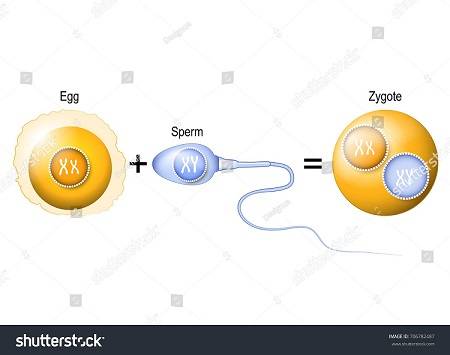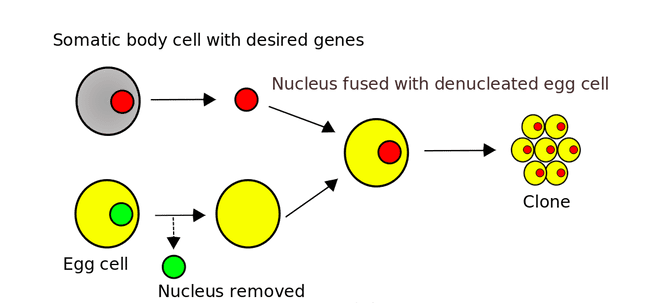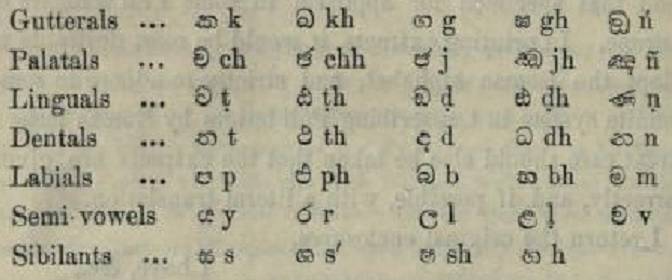Introduction – Cloning of Dolly the Sheep
1. Cloning of various types of animals has become common since Dolly was cloned in 1996. Three sheep contributed to the birth of Dolly. One provided the egg, another the DNA (donor), and a third (surrogate mother) carried the cloned embryo to term.
- Obviously, a clone has the most similarities with the donor and there is no “father” involved (no sperm is needed). Are these consistent with the Buddha Dhamma, and how does a gandhabba play a role?
- Also, there are some myths associated with cloning, such as whether “totally unexpected creatures or monsters” can result from cloning.
- Therefore, it is good to review the key steps in the cloning process and to clarify these issues.
What Happens in a Normal Conception?
2. But, first, we need to look at what happens in a “normal conception” where an egg and a sperm combine to form the unique cell called a zygote. This was explained in the previous post, “Buddhist Explanations of Conception, Abortion, and Contraception“. Here, we will first extend that discussion.
- The “material base” for a new life is a zygote. In a natural conception, the zygote is formed by the fertilization of a female egg by a sperm from a male. Then a gandhabba can come into the womb and provide the “mental basis” for the new life, as explained in the above post.
- There are two things REQUIRED to make a zygote. The first requirement is the egg that comes from the mother and is unique. However, eggs have only 23 chromosomes instead of 46 chromosomes in all other cells. Therefore, the second requirement is to somehow have 46 chromosomes in the nucleus of an egg.
- Let us discuss the two factors in a bit more detail since this was not discussed in the previous post.
An Egg Is Unique
3. Eggs are the most remarkable of cells. They can give rise to a completely new individual within a matter of days or weeks in some animals. No other cell in a higher animal has this ability. Egg cells also contain many mitochondria which supply the energy required for cell replication and division.
- However, an egg must be “activated” first in order to start the cell division process. It is activated only when its nucleus has a full complement of 46 chromosomes or 23 pairs.
- You can read more about the role of the egg at, “How Does a Single Cell Become a Whole Body?“: https://www.discovermagazine.com/mind/h ... whole-body
Activation of the Egg by the Presence of 46 Chromosomes
4. Now, to the second factor. Most cells in a body have 23 pairs of chromosomes, for a total of 46. The egg and sperm are different. Each egg and each sperm has only one set of 23 chromosomes, not a pair.
- When fertilization occurs in normal conception, the 23 chromosomes from the egg combine with the 23 from the sperm to create a zygote or a fertilized egg with the full complement of 23 pairs of chromosomes. This is shown in the following diagram (courtesy of Shutterstock):

- In this case of normal conception, those two nuclei from mother and father will combine to form a single nucleus in the yellow cell (egg), which is now the zygote.
- So, we see that in normal conception, the nucleus of the zygote — or the result of the merger of the egg with the sperm — will be a cell with a nucleus that has half chromosomes from the mother and the other half from the father. Thus, DNA from mother and father BOTH contribute to the zygote in normal conception. This is why the baby will have bodily features from both parents (a mix).
Science Cannot Explain Why Some Zygotes Are “Duds”
5. When the above process is complete, the egg becomes a zygote. At this point, the cell division is supposed to activate. However, some zygotes do not activate and thus do not lead to a fetus or a baby.
- Scientists do not know why the zygotes formed by the union of some couples do not lead to cell division, i.e., why certain couples cannot have babies.
It Is a Gandhabba That “Activates” the Zygote!
6. The only difference in Buddha Dhamma is that the cell division starts ONLY IF (and when) a gandhabba descends to the womb and merges with that zygote.
- A new animal or human life cannot be initiated without a gandhabba (or the “mental body” or “manōmaya kāya“.)
- In the case of a natural conception, the matching gandhabba (or patisandhi viññāna) will descend to the womb and will be merged with that fertilized egg to complete the conception. However, if a previous kamma vipaka for the mother and father does not allow a conception, a gandhabba WILL NOT be drawn into the womb.
- Otherwise, a matching gandhabba with gati that are a mix of gati of mother and father will be drawn into the womb. That is why a child is likely to have gati which are a mix of the two parents. That is in addition to having physical features of the parents.
A Gandhabba (Mental Body) Makes the Zygote Alive
7. Without the “mental component” or the gandhabba, there is no life! A zygote is an inert cell and has no “sentient life”. The zygote that results from the merger of the egg and the sperm is just the “material base” and not a “new life”.
- It is only when the gandhabba descends to the womb and takes possession of that zygote that it “becomes alive”.
The Procedure of Cloning Versus Natural Conception
8. The zygote formation is different in cloning compared to the natural conception. In the case of cloning, a sperm from a father is not involved.
- Here the nucleus of the egg is REMOVED, and the nucleus of the “donor cell” with the full set of 46 chromosomes is INSERTED in the egg. That is the key difference in cloning. So, now the nucleus of the egg has the full set of chromosomes needed to start cell division. The basic process involved in cloning is nicely represented by the following diagram:

9. However, it seems that is not enough to initiate the cell division. An electric shock is required to activate the process (i.e., to initiate cell division of this artificially created zygote.) This is the second difference compared to the natural process.
- Therefore, the artificially modified egg is placed in the womb of the surrogate mother, and an electrical shock is applied to start the cell division.
- The above figure is from the article, “20 years after Dolly: Everything you always wanted to know about the cloned sheep and what came next”:[html]https://source.colostate.edu/20-years-d ... came-next/[/html] You may want to read that article too.
A Gandhabba Is Still Needed in Cloning
10. Even though that is the whole picture according to science, Buddha Dhamma says, there MUST be a gandhabba merging with that cell in order to “give it life”.
- Just like in the case of natural conception we discussed above, there is no “new life” created with cloning. It just created a suitable “temporary home” for the gandhabba.
- When that physical body dies, the gandhabba would come out and wait for another womb to be ready. Dolly has now died and it is possible that she was reborn as another sheep somewhere.
Genetic Material Is From One Cell in Cloning
11. The main thing from the above figure in #8 on cloning for our discussion is that the yellow cell is the egg from the mother. The other cell on the top is from the “donor.” It is not sperm but any kind of cell. No sperm is in the picture. Instead of half the genetic material coming from sperm and half from an egg, it all comes from a single cell.
- The unique feature of the egg from the mother is that it allows the growth of a whole animal (with many body parts for doing very different things) just starting with that single cell.
- However, the egg needs to have a full set of 46 chromosomes to form the zygote. In cloning, the whole set comes from the “donor” as shown in the above figure. In a natural conception, half of the chromosomes come from the mother (egg), and the other half comes from the father (sperm), as shown in the figure above in #4.
- When an egg starts cell division, it splits — first into 2, then 4, then 8, 16, 32, 64, and so on — it is not merely splitting. It is a complex process that produces descendant cells with a huge variety of shapes and functions: bone cells, nerve cells, red and white blood cells; the cells of the eyes, fingernails, stomach, skin, etc.
More Information From Scientific Studies
12. Now, in the case of cloning, the following should be clear, according to science:
- The mother that provides the egg, provides the all-important platform for cell division that leads to the formation of the new offspring.
- However, 99% of the DNA comes from the donor. Therefore, the physical resemblance of the offspring would be to the donor, as is the case with Dolly the sheep.
- The surrogate mother who carries the embryo to term would provide no real contribution to the physical appearance of the offspring, according to science.
No “Monsters” Will be Created With Cloning
13. Studies done over the past 20 years with different types of animals show that:
- Some people are afraid that cloning can lead to unexpected outcomes like “creating monsters.” However, from the above discussion, it is clear that monstrous creatures cannot be expected to form due to cloning. This is because the source of DNA is the donor. Therefore, the clone will look like the donor.
- It is not possible to clone an animal that is identical to the donor. Even if they look similar, their character traits are different.
- The success rate is low, around 10%.
- Those are observations from the cloning studies over the past 20 years. They are consistent with our picture of the gandhabba having gati close to that of the donor. No two animals can be the same. In the case of natural birth, gandhabba‘s gati will be close to those of both parents.
Additional Points From Buddha Dhamma
14. That is pretty much the picture in Buddha Dhamma too, but with the following exceptions:
- All three involved in the cloning process would contribute to some extent to the “mental qualities” in selecting a matching gandhabba (which happens automatically.) However, the major contribution is likely to come from the donor.
- Of course, we can only make a guess, since the Buddha never had to explain this particular case. The Buddha specifically mentioned that the “mental state of the mother” at the time of gandhabba descending to the womb is a factor. This is why even the most moral mother may, in a few cases, end up with a baby who turns out to have immoral gati.
- Therefore, the surrogate mother — within whose womb the actual descending of the gandhabba would occur — could play some minor role in determining the behavior of the baby, but not the physical appearance, i.e., the developing embryo would be affected by the mood and health of the surrogate mother.
Conclusion – New Life Cannot Be Created
15. The word “clone” is defined as, “an organism or cell produced asexually from one ancestor or stock, to which they are genetically identical.”
- However, a clone will NEVER be exactly the same as the “donor.” They are two different “lifestreams.” The Buddha taught that each lifestream has existed “forever” and we discussed Tipitaka references in, “Origin of Life – There is No Traceable Origin.” published on Jun 29, 2019: viewtopic.php?f=46&t=26749&p=518755#p518755
- All living beings in existence now have been in the rebirth process forever. The Buddha said that there is no discernible beginning to any living being.
16. The main point from Buddha Dhamma is that a new life cannot be created by any means, whether in a laboratory or anywhere in the universe. This is the only inconsistency with science here, and it is a major inconsistency.
- Living beings just keep switching from realm to realm, but most are trapped in the lower realms. While in the human or animal realms, they spend a lot of time as gandhabbas; see, “Gandhabba – Only in Human and Animal Realms“: https://puredhamma.net/dhamma/the-grand ... al-realms/
- So, an animal like Dolly would be switching from a “sheep gandhabba” to a sheep to a “sheep gandhabba” to a sheep…until the kammic energy for the “sheep bhava” or “sheep existence” runs out.
- When the kammic energy for the “sheep bhava” runs out, it will grasp another existence. There is no end to this process until reaching the Arahanthood.
- So, I hope it is clear that cloning itself is consistent with Buddha Dhamma, and specifically with the concept of gandhabba.
- We will continue the discussion on Paticca Samuppāda in the next post.
